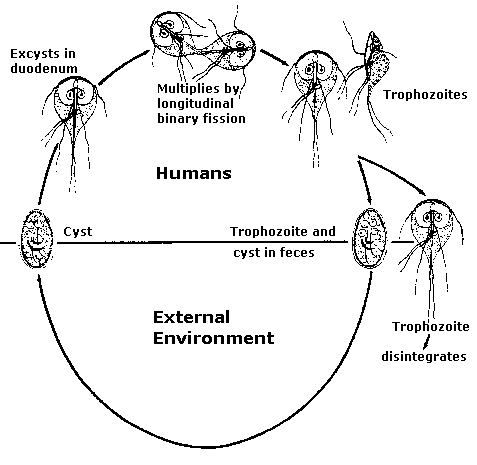-
"Infection occurs by the
ingestion of cysts in contaminated water or
food.
-
In the small intestine,
excystation releases trophozoites that multiply
by longitudinal binary fission.
-
The trophozoites remain in the
lumen of the proximal small bowel where they can
be free or attached to the mucosa by a ventral
sucking disk.
-
Encystation occurs when the
parasites transit toward the colon, and cysts are
the stage found in normal (non diarrheal)
feces.
-
The cysts are hardy, can survive
several months in cold water, and are responsible
for transmission.
-
Because the cysts are
infectious when passed in the stool or shortly
afterward, person-to-person transmission is
possible.
-
While animals are infected with Giardia,
their importance as a reservoir is unclear."
-
courtesy of
the Division of
Parasitic Diseases at the National Center for
Infectious Diseases, Centers for Disease Control
& Prevention
